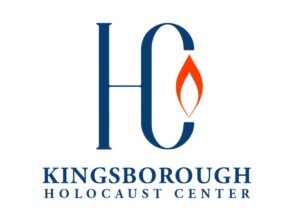North Carolina. Candidates wishing to become initiated into this particular group of the Ku Klux Klan take their oaths as part of the naturalization ritual.
“Naturalization is becoming a citizen of the Invisible Empire, not unlike becoming a naturalized citizen of the United States,” according to a comment made by the late Imperial Wizard Dale Fox.
Photo and caption by Anthony Karen, all rights reserved.

Tennessee. The late husband of a 5th generation Klanswoman (L.O.T.I.E., Ladies of the Invisible Empire) and seamstress displays one of their custom-made robes during a Klan gathering.
Photo and caption by Anthony Karen, all rights reserved.

Kentucky. A white nationalist laces up a new pair of Aryan Wear Panzer boots during an annual white unity concert weekend.
Photo and caption by Anthony Karen, all rights reserved.

Indiana. A collection of flags provides a backdrop at a Ku Klux Klan gathering. The flag on the right is widely displayed within Klan organizations.
The circular insignia in the center of the flag is known as a “MIOAK,” which stands for The Mystic Insignia of a Klansman. Today, it is most commonly known as the “blood drop cross.” It is displayed as the patch seen on the robes of Klansmen. It is also part of the Imperial Seal of the Ku Klux Klan.
Photo and caption by Anthony Karen, all rights reserved.

North Carolina. A Ku Klux Klan cross lighting ceremony – prior to the ritual, a wooden cross is wrapped in burlap and doused with a mixture of kerosene and oil (referred to as Klan cologne), then set aflame.
The cross lighting is the culmination of a Klan gathering. According to Klan ideology, the fiery cross signifies the light of Christ, a light that brings spiritual truth to a world that is blinded by misinformation and darkness. It is held in great reverence by Klan members.
Photo and caption by Anthony Karen, all rights reserved.
Symbols and Rituals
White supremacist activism has long been structured and defined by symbols and rituals. Members of the Ku Klux Klan wear robes and hoods (also known as helmets) and use titles such as “Imperial Wizard” (the national leader), “Grand Dragon” (the overseer of a geographic area within the Klan), “Exalted Cyclops” (chief officer of a single Klan unit, also known as “klavern”), and “Kludd” (group chaplain). These titles, initiation rituals, as well as their ideology − a combination of white supremacy and Protestantism − are laid out in the Kloran, the Ku Klux Klan’s rule book that was published more than one hundred years ago.
Of all Klan rituals, cross burnings are perhaps the most well-known. This practice, which dates back to fourteenth-century Scotland, was adopted by the Klan in 1915 and remains significant to Klan groups today. As the Klan grew in numbers and influence, cross burning became an important ritual of group solidarity and a means to spread terror among Black people.
Through efforts of Klan leaders such as Robert Miles and David Duke, much of the Klan has come to embrace Nazi symbols and ideology as compatible with their white supremacist outlook. Between 1971 and 1979, Miles formulated the relationship between traditional Klan practices, Christian Identity (an antisemitic, racist theology), neo-paganism, and National Socialism. He sponsored a series of gatherings where Klansmen, neo-Nazis, Christian Identity preachers, and paramilitary enthusiasts exchanged theoretical perspectives and debated tactics. In a similar fashion, David Duke, a former neo-Nazi who became the leader of the Knights of the Ku Klux Klan in 1974, fused Klan iconography with Nazi racism and Christian Identity. By the 1980s, hybrid Nazi-Klan associations began to exceed membership in traditional Klan groups, notes historian John Drabble.
Further Reading
Val Burris, Emery Smith & Ann Strahm, “White Supremacist Networks on the Internet,” Sociological Focus, vol. 33, no. 2 (2000), pp. 215–35.
David M. Chalmers, Hooded Americanism: The History of the Ku Klux Klan (New York: New Viewpoints, 1981).
John Drabble, “From White Supremacy to White Power: The FBI, COINTELPRO-WHITE HATE, and the Nazification of the Ku Klux Klan in the 1970s,” American Studies, vol. 48, no. 3 (2007), pp. 49-74.
Elinor Langer, “The American neo-Nazi Movement Today,” The Nation (1990), pp. 82-107.
Jack Nelson, Terror in the Night: The Klan’s Campaign Against the Jews (New York: Simon & Schuster, 1993).
William J. Simmons, Kloran (c. 1915) https://images.library.wisc.edu/WI/EFacs/WiscKKK/RiverFalls/KlanEphem/reference/wi.klanephem.i0004.pdf (accessed July 6, 2023).
Thomas A. Tarrants, Consumed by Hate, Redeemed by Love: How a Violent Klansman Became a Champion of Racial Reconciliation (Nashville: Thomas Nelson, 2019).




